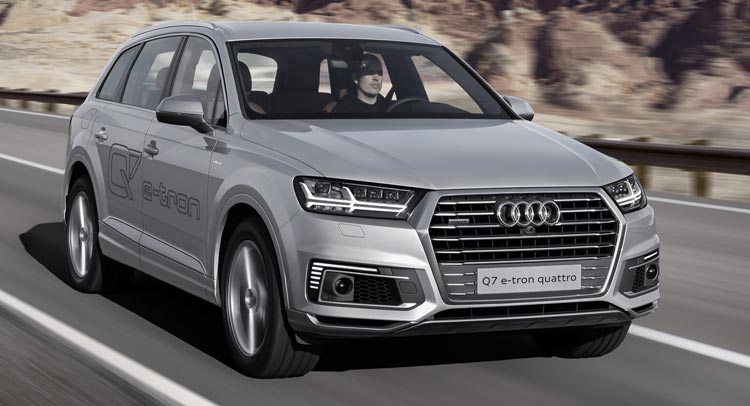Since diesel-powered cars are not popular in China, Audi has developed a petrol plug-in hybrid version for the new Q7 specifically for Asian markets (China, Singapore and Japan).
Debuting at the Shanghai Auto Show, the Audi Q7 e-tron 2.0 TFSI quattro also marks the first time that Audi has combined a TFSI plug-in hybrid with quattro all-wheel drive.
The hybrid powertrain combines a 2.0-liter turbocharged four-cylinder petrol engine with an electric motor for a total output of 367PS (362hp) and 700Nm (516lb-ft) of system torque.
The petrol engine alone produces 252PS (249hp) of power and 370Nm (273lb-ft) of torque, while the disk-shaped electric motor develops 94kW (128PS or 126hp) and 350Nm (258lb-ft) of torque. Together with a decoupler, the electric motor is integrated into the 8-speed tiptronic transmission.
The plug-in hybrid SUV accelerates from 0 to 100 km/h (62 mph) in 5.9 seconds and reaches a top speed of 220 km/h (137 mph). Even more interesting is the declared fuel consumption of 2.5 l/100 km (94.1 mpg US), corresponding to CO2 emissions of less than 60 g/km – according to China’s measurement method for plug-in hybrid vehicles (PHEV).
The Audi Q7 e-tron 2.0 TFSI quattro can cover up to 53 km (33 miles) solely on the electricity stored in its 17.3 kWh lithium-ion battery, while total range is 1,020 km (634 miles).
The model can be recognized from other Q7 variants thanks to the special designs for the singleframe grille, the air inlets, the 19-inch (optional 20-inch) wheels and the rear diffuser.
Standard equipment includes the Audi virtual cockpit, MMI navigation plus with online updates of the navigation map, MMI all-in-touch, automatic air conditioning and 19-inch wheels, among other features. Optional extras include a head-up display, tinted privacy glazing, a panoramic glass sunroof and climate-controlled, customized contour front seats with massage function.
The Audi Q7 e-tron 2.0 TFSI quattro will be available in China, Singapore and Japan beginning in 2016.








































